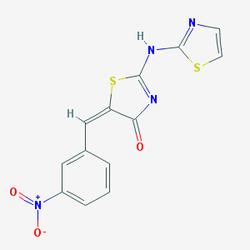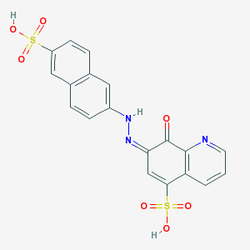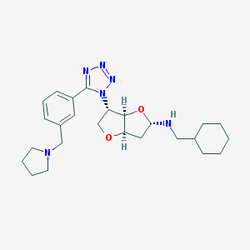This web page was produced as an assignment for Genetics 677, an undergraduate course at UW-Madison.
Chemical Genetics
A search on PubChem for JMML yielded 37 results. Almost all are conformationally defined retinoic acid analogues that could potentially help JMML and AML patients. I will only show a few of them below as they are analogues and are very similar. The following compounds do not function through manipulation of the KRAS pathway.
Other than the above group of chemicals, 17 2-thiazolylimino/heteroarylimino-5-arylidene-4-thiazolidinones divided into three series of derivatives bearing thiazole-, benzo[d]thiazole-, and benzo[d]isothizole rings were tested for SHP-2 inhibitory activity. SHP-2 is encoded by PTPN11, thus is downstream to KRAS. PTPN11 mutations are known in JMML patients. Most of the compounds were found to be good inhibitors of SHP-2 but has not been clinically tested.
A search on DrugBank[2] for drugs that are used to help treat JMML yielded the following small chemical, Clofarabine.
Clofarabine is a purine nucleoside antimetabolite that is being studied in the treatment of cancer. It is marketed in the U.S. and Canada as Clolar. In Europe and Australia/New Zealand the product is marketed under the name Evoltra.
Clofarabine is used in paediatrics to treat a type of leukaemia called relapsed or refractory acute lymphoblastic leukaemia (ALL), only after at least two other types of treatment have failed. It is not known if the drug extends life expectancy. Some investigations of effectiveness in cases of acute myeloid leukaemia (AML) and juvenile myelomonocytic leukaemia (JMML) have been carried out.
Clofarabine is used in paediatrics to treat a type of leukaemia called relapsed or refractory acute lymphoblastic leukaemia (ALL), only after at least two other types of treatment have failed. It is not known if the drug extends life expectancy. Some investigations of effectiveness in cases of acute myeloid leukaemia (AML) and juvenile myelomonocytic leukaemia (JMML) have been carried out.
UCSF discovery - Drug that targets KRAS pathway
In addition, a recent discovery (March 2011) by researchers in UCSF has uncovered a drug that could potentially reduce the symptoms and increase survival rate of JMML patients[3]. The drug, currently only known as PD0325901 inhibits the downstream targets of KRAS, a highly selective pharmacological inhibitor of mitogen-activated or extracellular signal–regulated protein kinase kinase (MEK)[4]. The researchers show that the drug can control the phenotype of the disease.
The above picture show that the drug can reduce the effects of JMML. Further research is required to apply and approve the drug for human use.
Analysis
The lack of drugs currently that can help treat JMML could be due to a lack of understanding of the mechanisms of function of JMML. The research at UCSF shows that there could be drugs that can help control the symptoms of JMML through inhibiting the KRAS pathway, indicating that KRAS has a significant role in contributing to the phenotype of JMML. Therefore, it is likely that further efforts in uncovering the KRAS pathway could yield discoveries that could help treat or control JMML.
References
1.PubChem
http://pubchem.ncbi.nlm.nih.gov/
2. DrugBank
http://www.drugbank.ca/drugs/DB00631
3. UCSF Researchers Identify Promising New Treatment for Childhood Leukemia
http://www.ucsf.edu/news/2011/03/9631/ucsf-researchers-identify-promising-new-treatment-childhood-leukemia
4. A MEK Inhibitor Abrogates Myeloproliferative Disease in Kras Mutant Mice
http://stm.sciencemag.org/content/3/76/76ra27.abstract?sid=388b977d-a1fe-4089-8833-6267aef004d0
http://pubchem.ncbi.nlm.nih.gov/
2. DrugBank
http://www.drugbank.ca/drugs/DB00631
3. UCSF Researchers Identify Promising New Treatment for Childhood Leukemia
http://www.ucsf.edu/news/2011/03/9631/ucsf-researchers-identify-promising-new-treatment-childhood-leukemia
4. A MEK Inhibitor Abrogates Myeloproliferative Disease in Kras Mutant Mice
http://stm.sciencemag.org/content/3/76/76ra27.abstract?sid=388b977d-a1fe-4089-8833-6267aef004d0









